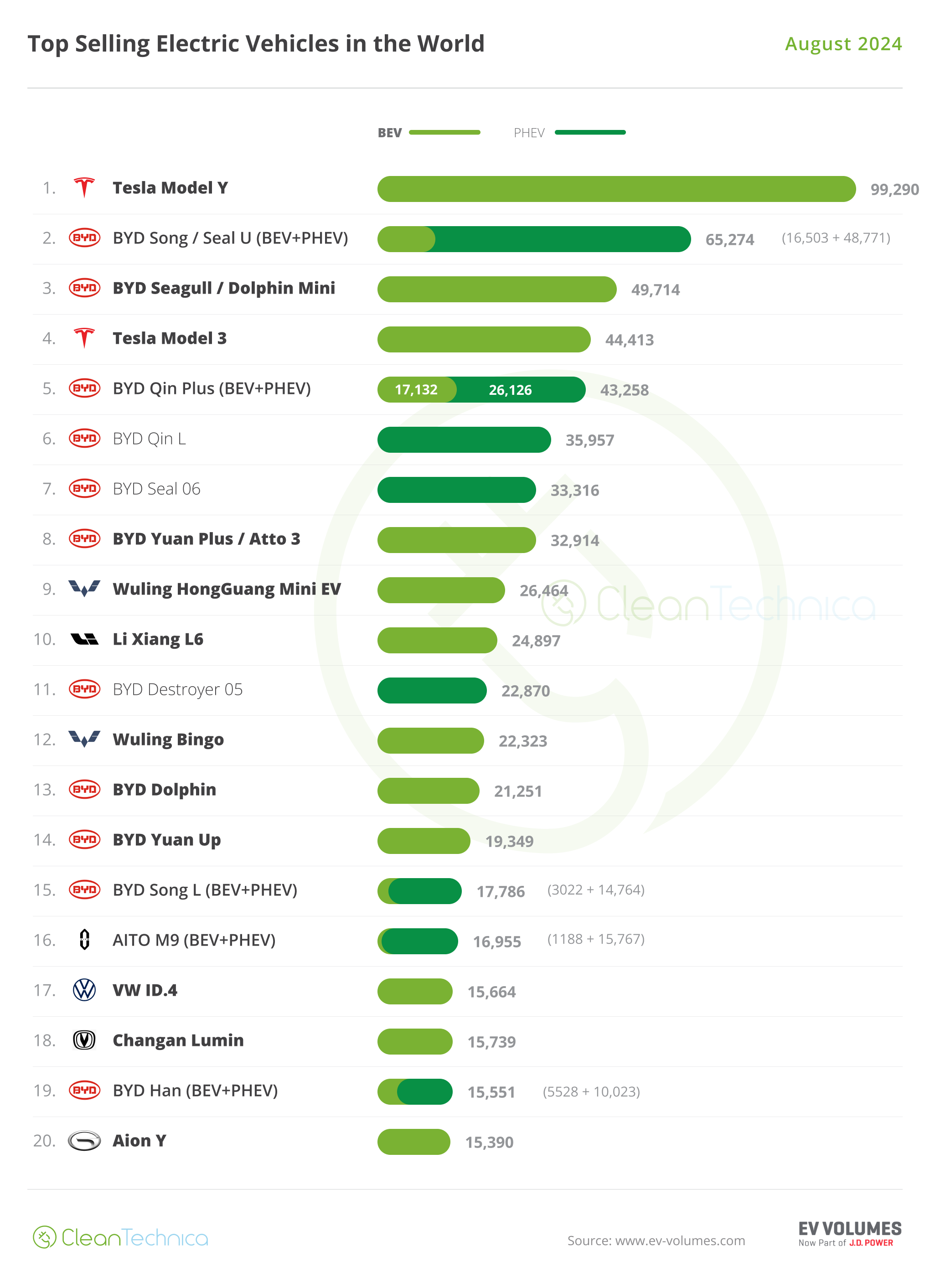Sign up for daily news updates from CleanTechnica on email. Or follow us on Google News!
I recently heard that even in pro-EV California, EV market share is at 22%. This is, of course, great news compared to where EV market share was 5 years ago, and amazing compared to 10 years ago. Compared to 20 years ago, it’s almost infinitely better. But, at the same time, there’s a long way to go. This means that around 78% of the market (assuming the social media scuttlebut is correct) still needs to convert to electric, at least for daily drivers and commercial vehicles.
The remaining population is going to be harder to get to switch over, but we can’t assume that the challenges are the same from person to person. For many people, lower prices and/or longer range is the tipping point. For others, getting used to something new seems daunting. There are also special uses, like towing or people who are always on the highway, that create additional challenges.
The far bigger challenge is going to be home charging, though. For people who own their own home, this isn’t a giant problem in most cases. If nothing else, you can plug in using a normal 120-volt outlet (24oV in many places outside the U.S.) and get enough charge for the average daily commute. If you don’t own a home and have an enlightened landlord, it could be possible to either install an EV charger or pay to use one the property owner provides.
But, if you don’t have a driveway/garage, or you rent and the property owner is against it, you’re SOL. Sure, you could go every few days and use a public charger somewhere, but that’s a huge waste of time and money. To really get all of the daily-driven vehicles on electric power, that power needs to be available where the car charges at night.
The Hard Way
One of the biggest obstacles to getting EV charging along sidewalks, in parking garages, or in apartment parking lots is the cost of putting a professional, commercial charging station in enough spaces. But, when you’re talking about dozens of stalls, the cost of putting in a fancy pants station really adds up. Some developers have complained that the price can be as high as $18,000 per space (they probably didn’t shop around), but even if a more reasonable $5,000 per space is achieved, you’re still not going to see developers put more than a handful of spaces in a large apartment complex, leaving people fighting over them.
Another big problem is maintenance. A smarter property owner will pay for a maintenance plan or an extended warranty on the equipment (which drives the cost per stall/space up), but many will try to cut a corner and end up with charging stations that fall into disrepair. Without a lot of revenue coming in, the property owner will probably opt to abandon it or wait weeks/months to fix it, leaving drivers stranded or reliant on public charging.
Even when upkept, the property owner will need to charge a lot of money for charging to pay for all of these associated costs (equipment, wiring, installation, electricity, demand charges, and maintenance), which will partially negate the advantage of EV ownership. Ouch!
Of course, this is the “right” way to equip apartments, parking garages, and many street-side parking spaces. Everyone gets charging eventually, but it’s expensive and a smattering of large corporations and government officials all get their little cut.
But it gets in the way of EV adoption, and is thus self-defeating.
The “Redneck” Way Might Be Worth Considering
If you really think about it, there’s a lot of wasteful spending going on with the above “solution.” Having smart commercial chargers with high-end Level 2 speeds is fantastic, but it’s not fantastic if it doesn’t actually happen because it’s too damned expensive.
What EV drivers really need is one thing: a plug at their parking space. They don’t need a credit card terminal. They don’t need a screen. They don’t need an app. They don’t even need a cord (most EVs come with at least a Level 1 cord in the trunk or frunk). Literally, all that’s needed is a place to plug that cord in and then run it to the car.
This isn’t a complete solution, obviously. An apartment owner can’t just put a plug in every space, because they need to protect it from electricity theft. Someone has to pay for the power, too. The EV driver also needs to protect their equipment from theft, so a standard outdoor plug just isn’t going to cut it.
RV parks do give us one possible solution that can be implemented in parking lots for a LOT cheaper. If you’ve ever been to one (to stay in a camper or to charge a car, or both), you’ve probably seen the way the plugs are covered by a box that swings open on the top of the pedestal. You can plug something in, close the cover on the box, put a padlock on the box cover, and then nobody can reach inside to unplug the cable.
Who pays for the power? Like at many RV parks, it’s possible to put an electric meter right on the pedestal. This would make it possible for the property owner or possibly even the electric company to bill the right person for their power usage. It’s also possible to run the power from an apartment unit to the parking space in many situations, putting the usage right on the main meter. Either way, there’s no reason the person renting the parking spot can’t pay for their own juice.
Repairs are unlikely, but if a cord breaks, it’s the responsibility of the driver to repair or replace it. This takes a huge problem off the property owner’s back while presenting minimal risk to the driver, as cords only cost $200–400 in most cases.
It doesn’t necessarily have to be high-amp 240V connectors. A box like this (or a smaller one) can come with a 120-volt, 20-amp plug inside. This isn’t great for charging an electric pickup from dead to full every night, but it would be enough power for most people to gain 30–50 miles per night, covering more than the average person’s daily range needs. Any range not used is a “rollover mile,” so it’s possible to slowly fill up an EV.
In either case, a larger locking box could be provided for around the same cost that would give a driver a place to securely store their charging cord. A little hook could be installed inside to spool the cord around, too. This would make it more convenient to charge up, as the driver would only need to unlock their little locker, string the cord out, plug the car in, and then lock the box back up.
This kind of a cheaper setup should probably be paired with one or two faster charging spaces in the parking lot for people who need an extra pick-me-up at any point. This could be a fast Level 2 charging station, or even a modest Level 3 (DCFC) station.
Would a fancy commercial station in front of every space be cooler? Sure! But I’d rather have a little lockbox with an outlet inside than nothing at all.
Featured image by Jennifer Sensiba.

Chip in a few dollars a month to help support independent cleantech coverage that helps to accelerate the cleantech revolution!
Have a tip for CleanTechnica? Want to advertise? Want to suggest a guest for our CleanTech Talk podcast? Contact us here.
Sign up for our daily newsletter for 15 new cleantech stories a day. Or sign up for our weekly one if daily is too frequent.
CleanTechnica uses affiliate links. See our policy here.
CleanTechnica’s Comment Policy



